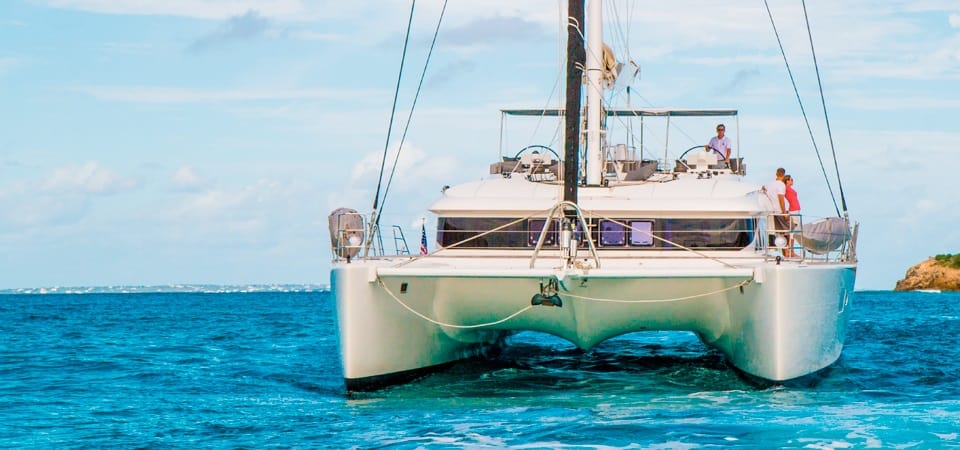The Space Between
 An In-Depth Look at Bridgedeck Clearance for Catamarans
An In-Depth Look at Bridgedeck Clearance for Catamarans
– By Sackville Currie of Multihull Design
Bridgedeck clearance (the height of the bridgedeck above the water) is crucial for catamaran’s seaworthiness and crew comfort. Because bridgedeck clearance can be seen at a glance, and is easily measured, even an inexperienced sailor can evaluate it.
Why does a catamaran need high bridgedeck clearance? First, ocean waves need headroom to pass between the hulls. Second, each bow creates a bow wave; these V-shaped waves meet under the bridgedeck and increase the clearance needed. What happens when bridgedeck clearance is inadequate? The one-word answer: Pounding. Visit our article on bridgedeck clearance on catamarans to see a video explanation of the importance of bridgedeck clearance by Stephen of Catamaran Guru as well as a video between the hulls of a Lagoon 450S in heavy following seas with moderate gale force winds.
Pounding causes three problem areas:
- to the crew: physical discomfort, and fatigue
- to the boat and rig: excessive wear and tear (I’ve had multihull design bulkheads break from windward pounding)
- and to the boat speed: a serious reduction.
The potential of the catamaran hull form, which is so impressive when sailing at 8 to 10 knots in 20 knots of breeze in protected waters, can be quickly reduced to 5 knots by pounding. Yes, a very low bridgedeck cat can lose 3 to 4 knots of boat speed with a major pound.
Read more about bridge deck clearance.





